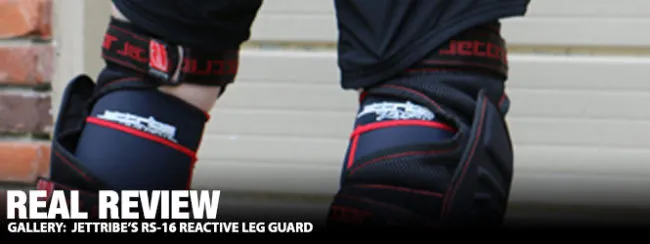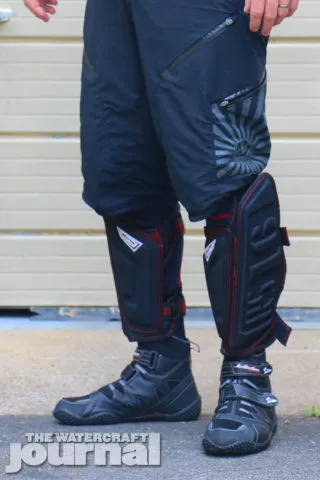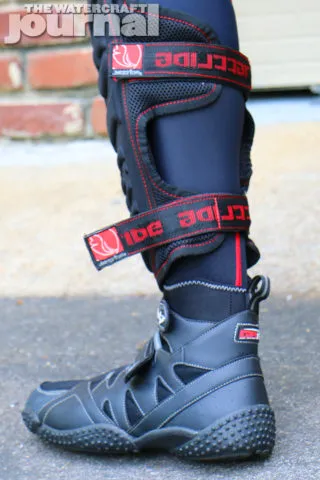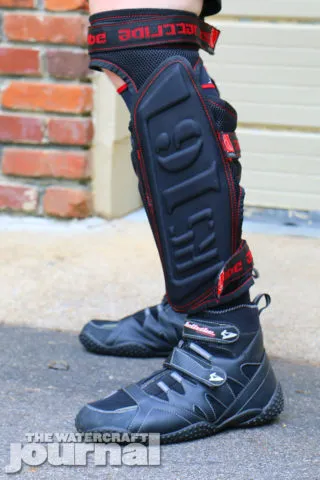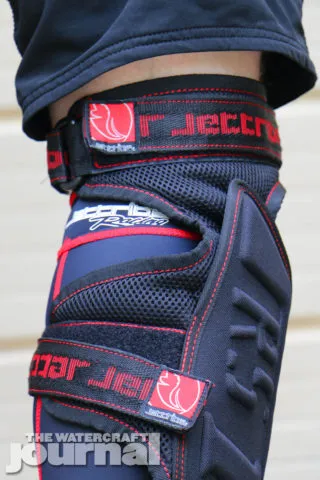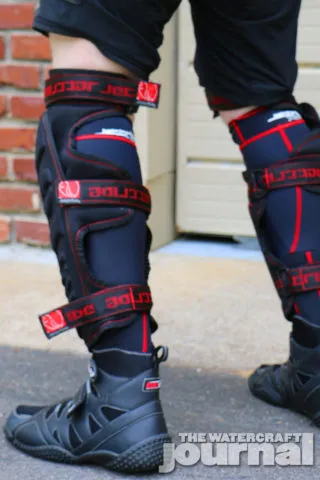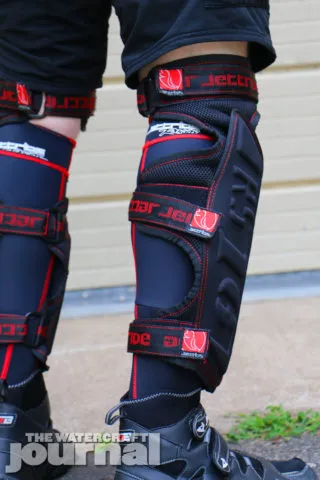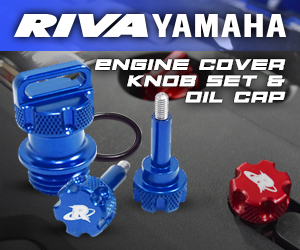The first rule of designing and manufacturing safety equipment should always be providing the optimum level of protection for the athlete. Yet, the second rule to not inhibit the athlete’s ability to move should be not equally as, but darn near close to as important. In the curious case of Jettribe’s Reactive Leg Guards, our verdict is split exactly 50/50.
But let’s step back and get this out of the way first: this review is for a product that 99.8-percent of the personal watercraft enthusiast market will never have any use for. Even if you’re an active racer, you’ll likely have no need for these. Heck, we haven’t seen these worn by Jettribe’s own US-based racers, be them participants in either runabout or standup ski. Now, some international sanctioning bodies have taken a shine to requiring leg braces/guards in the same way they adopted neck braces for standup racers a few years ago. Whether enough pressure to P1 AquaX, Pro Watercross and the IJSBA to mandate all racers use these will be applied remains doubtful.
Why? Because initially, Jettribe’s Reactive Leg Guards simply don’t make much sense for standup racers, and those racing full-sized runabouts don’t often encounter the kinds of collisions (at least the good ones) that would require the level of engineering and protective materials that Jettribe has poured into these (and in all sincerity, there’s quite a bit). Frankly put, upon first glance, they’re complete overkill.
Each leg guard is comprised of a pair of flat, rigid impact panels composed of five layers of energy-dissipating materials: first, a compression-molded outer shell, two laminated, honeycomb polycarbonate sheets, EVA high-density energy absorbing foam, and wrapped in thick, 1680D ballistic nylon. Despite their build, each panel is surprisingly lightweight (thanks in large part to the neoprene and air mesh materials), and incorporate built-in water drain holes to keep them from water-logging.
Both panels are sown to a nylon webbing with three D-rings and large Velcro straps, the upper wrapping around your thigh above the knee with the two lower straps tightening above and below your calf. Unfortunately, the upper D-ring digs into your leg behind the knee, and if tightened enough actually can pinch your Achilles tendon. Moreover, these panels have nearly zero contouring, so unless your legs are build from Lego, they’re gonna feel more than a little uncomfortable, especially climbing up and into the tray of a standup.
If these become mandatory equipment per the description on Jettribe’s website, be prepared to spend $89.99 a pair. Again, there is a great deal of effort by Jettribe’s team in keeping the PWC racer safe particularly by incorporating top-of-the-line materials such as these; we only wish that there was a greater effort into developing a much more comfortable and natural fit.





